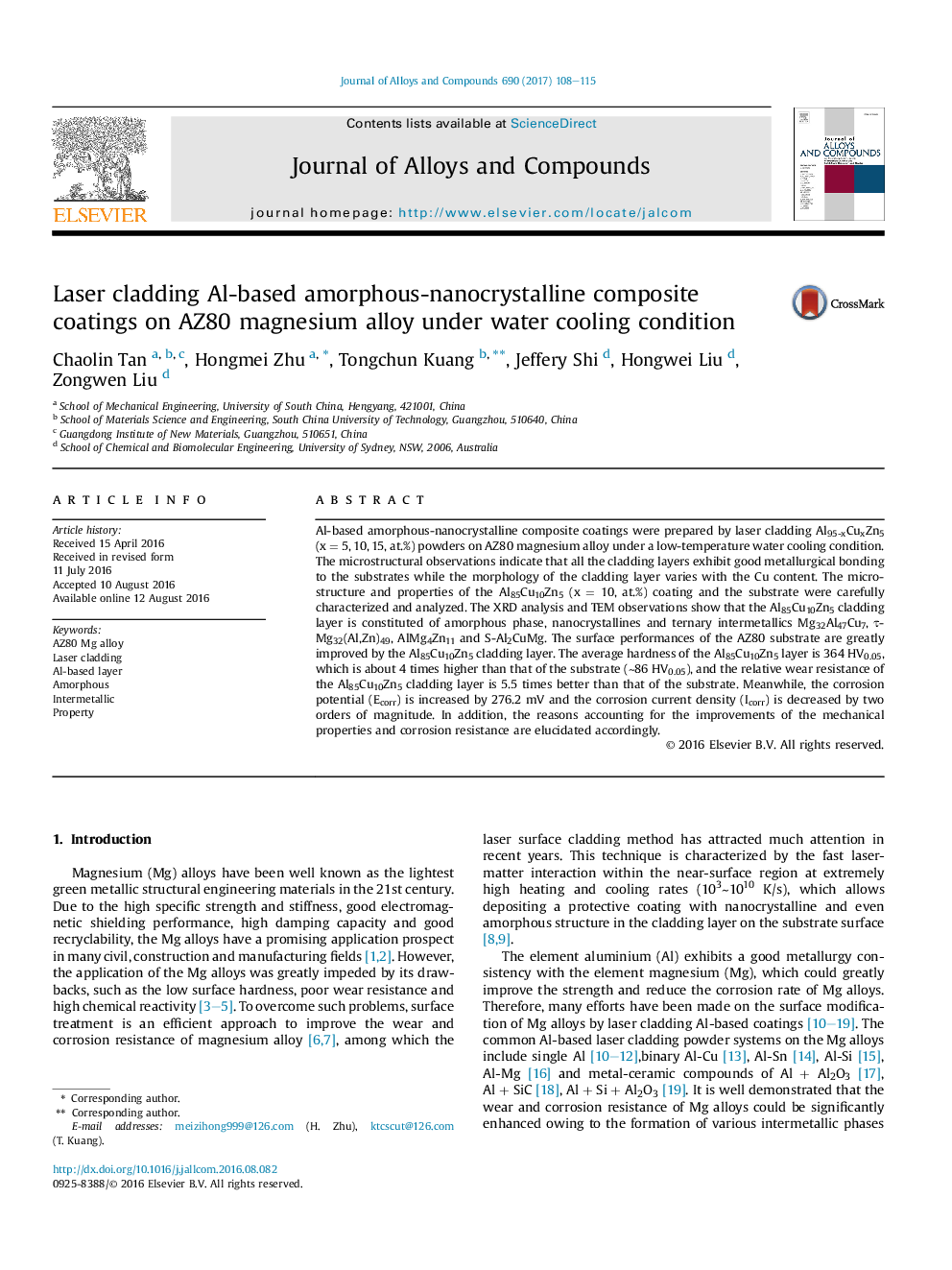| کد مقاله | کد نشریه | سال انتشار | مقاله انگلیسی | نسخه تمام متن |
|---|---|---|---|---|
| 1604899 | 1516204 | 2017 | 8 صفحه PDF | دانلود رایگان |
• Novel Al-Cu-Zn amorphous-nanocrystalline composite cladding layers are obtained.
• Al85Cu10Zn5 laser cladded specimen has the highest GFA and excellent properties.
• Detail microstructural information is determined by XRD, SEM and TEM.
• Comprehensive properties of AZ80 Mg alloy are substantially enhanced.
• Reasons for improved characteristics are detailedly elucidated.
Al-based amorphous-nanocrystalline composite coatings were prepared by laser cladding Al95-xCuxZn5 (x = 5, 10, 15, at.%) powders on AZ80 magnesium alloy under a low-temperature water cooling condition. The microstructural observations indicate that all the cladding layers exhibit good metallurgical bonding to the substrates while the morphology of the cladding layer varies with the Cu content. The microstructure and properties of the Al85Cu10Zn5 (x = 10, at.%) coating and the substrate were carefully characterized and analyzed. The XRD analysis and TEM observations show that the Al85Cu10Zn5 cladding layer is constituted of amorphous phase, nanocrystallines and ternary intermetallics Mg32Al47Cu7, τ-Mg32(Al,Zn)49, AlMg4Zn11 and S-Al2CuMg. The surface performances of the AZ80 substrate are greatly improved by the Al85Cu10Zn5 cladding layer. The average hardness of the Al85Cu10Zn5 layer is 364 HV0.05, which is about 4 times higher than that of the substrate (∼86 HV0.05), and the relative wear resistance of the Al85Cu10Zn5 cladding layer is 5.5 times better than that of the substrate. Meanwhile, the corrosion potential (Ecorr) is increased by 276.2 mV and the corrosion current density (Icorr) is decreased by two orders of magnitude. In addition, the reasons accounting for the improvements of the mechanical properties and corrosion resistance are elucidated accordingly.
Journal: Journal of Alloys and Compounds - Volume 690, 5 January 2017, Pages 108–115
